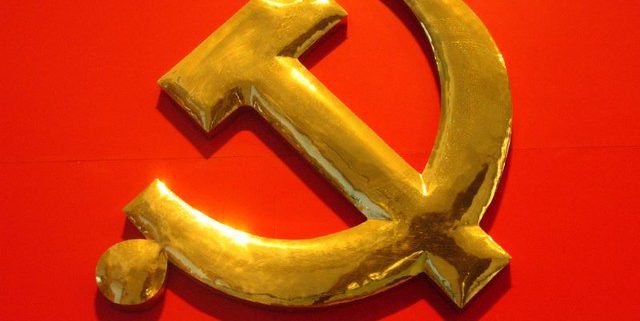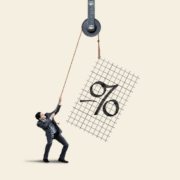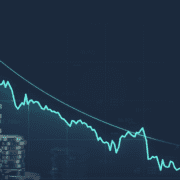Socialism and Gold
Socialism and Gold
Most people assume that the central bank prints money when it buys bonds. They further assume that this increase in the quantity of money causes an increase in the general price level. And, this leads them to assume that the value of the money is 1 / P (P is the general price level). Therefore, when the central bank prints money to buy bonds, it is diluting the value of the money held by everyone—in proportion to the amount printed divided by the total amount in circulation.
This is not even wrong. So let’s look at how it really works.
What is a Dollar?
Of course, as we’ve said many times before, the dollar is not money. It is irredeemable credit. And so is the Treasury bond. The difference between the currency and the bond is maturity. The currency is credit of zero duration and the bond has a duration of e.g. 10 years.
The Fed is not printing, but merely exchanging one irredeemable credit for another.
The Fed buys bonds from major financial institutions. When a bank sells a billion dollars’ worth of bonds for one billion dollars, it does not go out and buy consumer goods such as cars, wine, and flat-screen TVs. To think so, is to suffer from a limited imagination!
A bank has a certain cost to stay open and beyond that seeks to make a profit. Hence, a bank is obliged to buy another asset in order to earn its required yield. When the bank gives up a bond to the Fed, it is at an uptick in the price. The can pockets this little fraction as its profit, but it must buy something else. Also on the uptick.
Price is the inverse of yield. The Fed pushes up the price of the Treasury, hence down the yield. The banks push up the price of other assets, hence down their yields. The net result is that all yields fall, as the Treasury bond yield falls.
The net result is the yield on all assets is pulled down. Of course, the yields of other assets are higher than Treasury bonds, due to the risks. So yield-starved banks substitute them for Treasurys.
As an aside, a few short years ago the Narrative in the alternative finance community was inflation and, of course, rising interest rates. As we write this, the 10-year Treasury yield is now down to 1%.
Banks, in turn, are buying these assets off other institutions, corporations, funds, and even retail investors. Everyone is pushed farther out on the risk and maturity curves seeking some sort of yield. This is not the underpinnings of a healthy financial system or economy.
But our focus today is on the trend towards socialism and how this affects gold.
Falling Interest Rates Lead to Socialism
The falling interest rate is a trend towards socialism.
To understand why, the first key concept is Net Present Value (NPV). Suppose a company generates $1 of free cash flow every year in perpetuity. What is that worth today? It depends on the rate of interest. That is, one must discount the dollar each future year using the rate of interest. For example, if the rate of interest is 10%, then that stream of cash flow is $1 + $0.90 + $0.81 + $0.73 … = $10. However, when the interest rate drops to 5%, then the NPV is $1 + $0.95 + $0.90 + $0.86 = $20.
When the interest rate is halved, the value of a perpetual stream of income doubles.
In past articles, we’ve said one must use the market rate of interest to discount future payments. Today, let’s drill down further into this idea. Suppose BigGiant Corp. and SmallBiz LLC are both considering buying an asset. BigGiant can borrow at LIBOR plus 0.5%. SmallBiz pays Prime plus 3%. That is, 2.1% and 7.75% respectively. Which do you think is going to pay more to buy the asset?
Each must perform its own NPV calculation based on its respective interest rate. That’s because each is performing its own arbitrage. Each is borrowing to finance that asset, and obviously will only do the transaction to make money. No one can borrow at 5% to buy a 4% yield.
With BigGiant’s interest rate being close to a quarter of what SmallBiz pays, it will value assets at about four times higher. This problem becomes particularly acute in a falling interest rate regime, where the interest rate for BigGiant is falling faster, while the interest rate for SmallBiz trails reluctantly behind.
It should be clear that BigGiant will outbid SmallBiz. This is not simply because, “well, big corporations have more money than small businesses.” Assuming that both intend to borrow to finance the purchase of the asset, the decisive factor is not the quantity of money. It is the lower cost of financing enjoyed by BigGiant.
If there is a trend of a widening interest rate spread between BigGiant and SmallBiz, then this will cause BigGiant to bid more and more aggressively for the assets that SmallBiz would like to own. It cannot hope to compete against BigGiant.
This drives a trend of consolidation.
Of course, arbitrage and relative price advantage is not only for BigGiant versus SmallBiz. One does not look at markets and say, “Big or small”. Real economics is not binary like that. There are many degrees. Every different player has its own interest cost, which determines how it sets the valuation on assets. In other words, BiggerGianter Corporation will place a higher value on an asset than BigGiant, and, hence, outbid it. And, BiggestGiantest, paying the lowest interest rate of all, will outbid BiggerGianter.
N.B.: the assets up for bid include SmallBiz itself. Also BigGiant, and even BiggerGianter. Everything that generates a cash flow can be bought with financing.
The logical end of an interest rate that is perpetually falling is the consolidation of assets onto the biggest balance sheet—having the lowest borrowing cost—that is perpetually growing as a consequence.
If ya ain’t scared, ya don’t get it. This is a very troubling trend, especially when you consider that BiggestGiantest Corporation is both controlled by the government and heavily influencing the government at the same time. This may be what American socialism looks like: the means of production owned by a dwindling set of government-crony mega corporations.
Now, this brings us to gold.
The Ultimate Asset
So far, we’ve mostly been talking about major institutions. A major institution is driven by its balance sheet. It issues liabilities to fund the purchase of assets. It can no more buy non-yielding assets than it can spend the proceeds of an asset sale on consumer goods. The ultimate non-yielding (well, until Monetary Metals) asset is gold. Why should a bank or insurance company pay 2.1% to finance the purchase of gold, which will then incur further costs for storage?
However, there are other market participants who are not borrowing to buy their assets, but who simply invest their capital. These savers include certain funds, as well as the retail investing public.
Each has his own time preference. That is, the minimum yield he demands in order to justify his investment. If the interest rate falls below his time preference, he might turn to hoarding commodities.
Analogous to each business having a different valuation (due to its cost of borrow) above, each saver has a different time preference. As the Fed drives down the interest rate, this does have the side-effect of driving down everyone’s time preference. However, a perpetually falling interest rate gets below the time preferences of each saver one by one.
The best commodities to hoard are, of course, gold and silver. Silver is best for small savers trying to set aside 10% of their weekly wages. Gold is preferred by wealthier savers and larger players.
One can think of the process of BigGiant outbidding SmallBiz, BiggerGianter outbidding BigGiant, and BiggestGiantest ultimately outbidding BiggerGianter as the process of displacing the savers by getting under their time preferences. They are buying assets from the savers at lower yields (which is the same thing as saying higher prices).
While the savers are choosing to invest or not, based on their time preference BigGiant and the others are choosing to invest or not, based on their cost of borrow. Cost of borrow is falling, so BiggestGiant wins.
Disenfranchised and displaced, the savers may increasingly turn to gold and silver. Though after several generations of indoctrination, the current generation of savers may be reluctant. One thing is for sure, as the interest rate continues to fall, their other options dwindle.
Add to this conundrum one more stress, and that is the growing risk of the financial crisis born out of a cascading debt default. Since 2009, many savers have been, if not content, then at least tolerant to park cash in the banks for zero return. This may seem to them to be better than a too-low yield on a much-higher risk to invest. But there is a force can make them withdraw their cash.
We’ve said many times before that there is no way to opt out of the dollar system and still hold that which most people yet call money. There is a way to opt out of the dollar system, but then one does not hold a money balance. One incurs price risk. To do this: buy gold.
The force to which we refer is the fear that one could lose one’s cash parked at the bank. One does not own cash in a bank. One has a deposit, which is the liability of the bank. That liability is only good so long as the bank isn’t bankrupt. The fear of bank bankruptcy can impel those tolerant of zero return to run from the banking system.
Two drivers push investors to gold. The weaker is falling yields. Much more ferocious is when there are signs of financial system insolvency.
Make sure to subscribe to our YouTube Channel to check out all our Media Appearances, Podcast Episodes and more!
Additional Resources for Earning Interest on Gold
If you’d like to learn more about how to earn interest on gold with Monetary Metals, check out the following resources:
In this paper we look at how conventional gold holdings stack up to Monetary Metals Investments, which offer a Yield on Gold, Paid in Gold®. We compare retail coins, vault storage, the popular ETF – GLD, and mining stocks against Monetary Metals’ True Gold Leases.
The Case for Gold Yield in Investment Portfolios
Adding gold to a diversified portfolio of assets reduces volatility and increases returns. But how much and what about the ongoing costs? What changes when gold pays a yield? This paper answers those questions using data going back to 1972.












Is it a feature of a gold standard that it reduces the difference in borrowing cost between BigGiant and SmallBiz? If so, how does a gold standard achieve this?
Scale always matters: bigness usually lowers the risk premium. The difference between commodity-pegged monies and credit-pegged monies seems to me to arise from the differing nature of force being applied to extract physical resources for human use and force being applied to social networks to extract human cooperation. The latter is a far more subjectively-managed realm wherein bigness often arises out of the mastery of regulatory capture.
A gold standard reduces the range of borrowing costs by constricting how much economic effect can be had by use of coercive force. I think there may be better ways to explain this, but my takeaway is just that the objective facts of the gold market are easier to evaluate than the subjective facts of the credit market and this makes for less volatility and therefore smaller spreads.